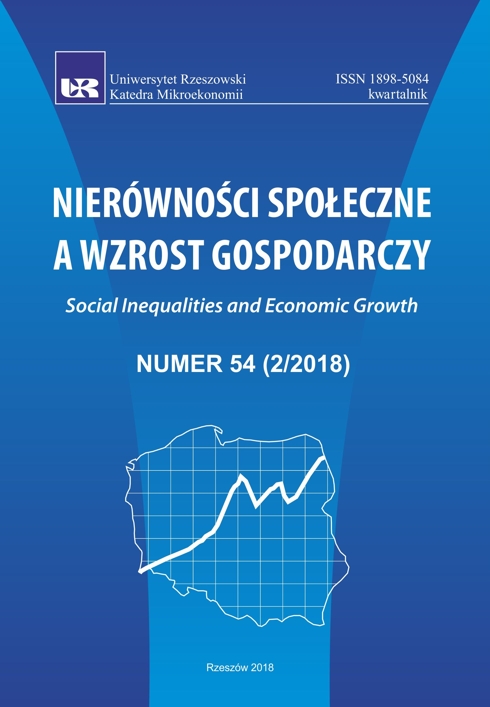Uczelnia nowej generacji – redefinicja instytucjonalna uczelni
DOI:
https://doi.org/10.15584/nsawg.2018.2.24Słowa kluczowe:
uczelnia nowej generacji, model funkcjonowania, problemy instytucjonalne uczelniAbstrakt
Występująca w obecnej postaci instytucja uczelni boryka się z wieloma ograniczeniami i problemami, których głównym powodem były liczne zmiany zachodzące w środowisku jej funkcjonowania (polityka edukacyjna i gospodarcza państwa, konkurencja, kształt rynku usług edukacyjnych itp.). Najważniejsze z tych problemów to deinstytucjonalizacja misji badawczej i koncentracja pracowników naukowych na dydaktyce, orientacja uczelni na wskaźniki ilościowe, na których dotychczas opierały się mechanizmy finansowania z budżetu państwa, obniżenie rygorów kultury akademickiej oraz konserwatyzm środowiska uczelnianego i niechęć do wprowadzenia zmian. Jako rozwiązanie tych problemów pojawia się wizja uczelni nowej generacji – współczesnego uniwersytetu, który ciągle się rozwija i doskonali w swoim dążeniu do ideału. Jest on organizacją inteligentną, podporządkowaną wiedzy, w związku z czym funkcjonuje w modelu hybrydowym, przejmując najlepsze cechy modeli klasycznego i przedsiębiorczego. Jest to zdefiniowana na nowo instytucja uczelni, która dzięki reinstytucjonalizacji misji badawczej i osiągnięciu równowagi pomiędzy misją dydaktyczną a naukową, rewizji akademickich postaw, norm i zachowań oraz umiejętności szybkiego dostosowania się do dynamicznie zmieniających się potrzeb i oczekiwań otoczenia sprawnie funkcjonuje i skutecznie realizuje swoją misję. Tutaj obok dwóch wyżej wspomnianych misji szkoły wyższych pojawia się ważna „trzecia misja”, której realizacja pozwala rozwijać przedsiębiorczość akademicką, zwiększać autonomię uczelni, oraz pełnić ważną rolę w rozwoju społecznym oraz gospodarczym poprzez prowadzenie działalności innowacyjno-wdrożeniowej.Downloads
Download data is not yet available.
Pobrania
Opublikowane
2020-11-13
Jak cytować
Hnatyszak, O. (2020). Uczelnia nowej generacji – redefinicja instytucjonalna uczelni. Nierówności Społeczne a Wzrost Gospodarczy, 2(54), 336–345. https://doi.org/10.15584/nsawg.2018.2.24
Numer
Dział
Artykuły
Licencja
Prawa autorskie (c) 2018 Uniwersytet Rzeszowski

Utwór dostępny jest na licencji Creative Commons Uznanie autorstwa – Na tych samych warunkach 4.0 Miedzynarodowe.


